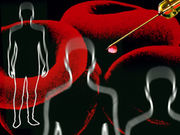Minimal response or more in 68.4 percent of patients, partial response or more in 54.4 percent
THURSDAY, Dec. 7, 2017 (HealthDay News) — For heavily pre-treated patients with relapsed/refractory multiple myeloma (RRMM), bortezomib, dexamethasone, thalidomide, cisplatin, doxorubicin, cyclophosphamide and etoposide (VDT PACE) regimen and its modifications (VDT PACE-like regimens [VPLRs]) are effective, according to a study published online Oct. 25 in the American Journal of Hematology.
Arjun Lakshman, M.D., from the Mayo Clinic in Rochester, Minn., and colleagues analyzed outcomes of 141 patients with RRMM who received VPLRs between 2006 and 2017. Patients had received a median of four prior therapies, including stem cell transplant (SCT) in 66.7 percent. Overall. 67.4 percent of patients received VDT PACE, 14.2 percent received VD PACE, and 18.4 percent received other VPLRs. A median of one cycle of VPLR was received by patients.
The researchers observed ≥ minimal response, ≥ partial response (PR), and ≥ very good PR in 68.4, 54.4, and 10.3 percent of patients, respectively. Median progression-free and overall survival was 3.1 and 8.1 months, respectively. Overall, 82.3 percent of patients received some therapy after VPLR: 61.2 percent received systemic chemotherapy and 38.8 percent underwent SCT. For those who received SCT after VPLR, median overall survival was 15.1 months. For patients receiving VPLRs, age ≥60 years and revised international staging system III stage predicted shorter overall survival (hazard ratios, 2.3 and 2.4, respectively).
“VPLRs are effective in heavily pre-treated RRMM,” the authors write. “In fit patients, SCT can be used to consolidate the response to VPLR.”
Several authors disclosed financial ties to the pharmaceutical industry.
Copyright © 2017 HealthDay. All rights reserved.








